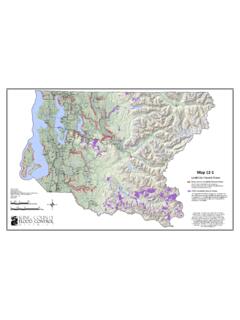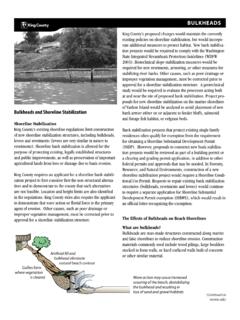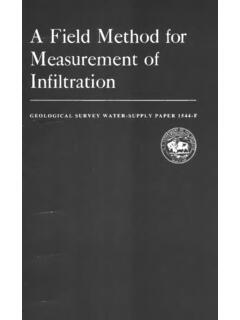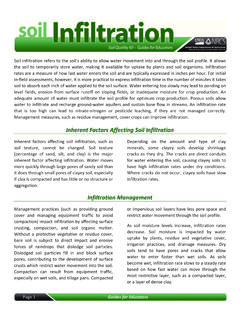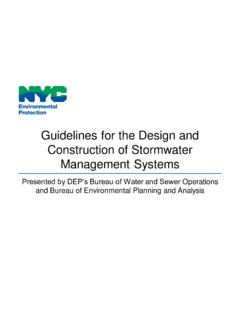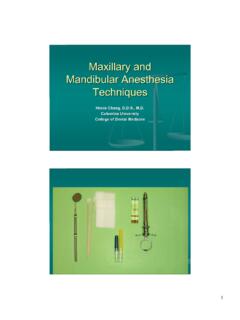Transcription of SWDM Appendix C - King County, Washington
1 Appendix C SIMPLIFIED DRAINAGE REQUIREMENTS king county , Washington SURFACE WATER DESIGN MANUAL king county Department of Natural Resources and Parks April 24, 2016 2 Appendix C SIMPLIFIED DRAINAGE REQUIREMENTS king county , Washington SURFACE WATER DESIGN MANUAL Section Simplified Drainage Review Requirements C-7 Section Procedure for Determining Requirements C-9 Section Targeted Drainage Review Requirements C-12 Section Application of Flow Control BMPs C-16 Section Application of CSWPP Measures C-26 Section Simplified Submittal Requirements C-30 Section Flow Control BMPs C-31 Section Full Dispersion C-32 Section Full infiltration C-48 Section Limited infiltration C-57 Section Basic Dispersion C-60 Section Farmland Dispersion C-70 Section Bioretention C-73 Section Permeable Pavement C-86 Section Rainwater Harvesting C-95 Section Reduced Impervious Surface Credit C-98 Section Native
2 Growth Retention Credit C-103 Section Perforated Pipe Connection C-105 Section Construction Stormwater Pollution Prevention (CSWPP) Measures C-107 Section Stabilized Construction Entrance C-108 Section Mulching C-110 Section Nets and Blankets C-112 Section Plastic Covering C-114 Section Mark Clearing Limits/Minimize Clearing C-115 Section Silt Fence C-116 Section Vegetated Strip C-118 Section Triangular Silt Dike C-119 Section Storm Drain Inlet Protection C-120 Section Seeding C-125 Section Sodding C-127 Section Interceptor Dikes and Swales C-128 Section Ditches C-130 Section Pipe Slope Drain C-132 Section Dewatering Control C-133 Section Control of Other Pollutants (SWPPS)
3 C-134 Section Simplified Drainage Plan Specifications C-137 Section Components of Simplified Drainage Plans C-137 Section Specifications for Site Plans C-139 Section BMP Design and Maintenance Details C-143 Section Written Drainage Assessment C-144 Section Reference Section C-147 Section Simplified Drainage Review Process C-147 Section Declaration of Covenant C-149 2016 Surface Water Design Manual 4/24/2016 king county , Washington , SURFACE WATER DESIGN MANUAL, Appendix C 4/24/2016 2016 Surface Water Design Manual Appendix C king county , Washington , SURFACE WATER DESIGN MANUAL, Appendix C Appendix C SIMPLIFIED DRAINAGE REQUIREMENTS The drainage requirements in this Appendix are for residential and agricultural projects that are subject to Simplified Drainage Review as determined in Section of the Surface Water Design Manual (SWDM).
4 Simplified Drainage Review is a simplified alternative to the Full Drainage Review process normally conducted by the county as part of its review of permits to evaluate a project's compliance with the core and special requirements of the SWDM. The thrust of these requirements is to provide for mitigation and control of increased runoff and pollution from development sites. For larger developments, this typically involves engineering analysis and design of flow control facilities ( , detention ponds) to mitigate increased runoff, water quality treatment facilities ( , wetponds) to remove pollutants from the runoff, and erosion and sediment controls (ESC) to minimize the discharge of sediment-laden runoff and other pollutants during construction.
5 For projects in Simplified D rainage Review, required mitigation of runoff impacts can usually be achieved with measures that can be applied by a non-engineer. These include flow control BMPs (Best Management Practices) such as splash blocks or gravel trenches to disperse or infiltrate runoff from impervious areas, or reducing the amount of impervious area and preserving native vegetation. Such measures provide both flow and water quality mitigation. Also included are simpler erosion and sediment control (ESC) measures to prevent the discharge of sediment and other pollutants during construction. Examples of ESC measures include phasing or minimizing clearing, installing silt fences to contain sediment on site, and placing straw or other mulching materials on exposed soils.
6 It also includes implementation of stormwater pollution prevention and spill control (SWPPS) practices applicable to specific construction activities such as proper use, handling, and storage of materials, chemicals, equipment, and fuel. In most cases, the Simplified Drainage requirements in this Appendix can be met with submittals prepared by contractors, architects, or homeowners without the involvement of a professional engineer. For more information on the Simplified Drainage Review Process, see Reference Section (p. C-147). Why Flow Control BMPs are Necessary On undeveloped land, most rainwater soaks into the ground and flows slowly to nearby lakes and streams through the upper layers of soil.
7 When that same area is cleared or covered with an impervious surface, the rainwater is no longer captured by dense vegetation and forest duff, but flows quickly and in greater quantities across the site and through pipes and channels to streams and lakes. Also, as it flows over developed surfaces ( , driveways, roads, lawns, and pastures), various pollutants generated by human uses of the land are picked up and carried downstream. The increased quantities of runoff from the site, when combined with increases from other sites, results in increased flooding and erosion of downstream properties and damage to aquatic areas habitat. And, the pollutants collected by the runoff degrade the water quality and habitat functions of streams, lakes, and wetlands.
8 Larger developments address these impacts by both storing the runoff in engineered flow control facilities ( , detention or infiltration ponds or vaults) that slowly release the runoff downstream and by treating the runoff in engineered water quality 2016 Draft Surface Water Design Manual Appendix C 4/24/2016 C-1 Appendix C - SIMPLIFIED DRAINAGE REQUIREMENTS facilities ( , wet ponds, biofiltration swales, or sand filters) and by application of flow control BMPs to maximum extent feasible. Controlling flows from smaller projects is just as important as controlling flows from large developments, because the cumulative effect of uncontrolled flows from many small projects can be equivalent to those from a single large project.
9 For projects that qualify as Simplified drainage review projects, however, engineered flow control facilities may not be practicable or even warranted if the quantity of runoff from developed surfaces can be minimized, dispersed, or otherwise infiltrated onsite through the use of flow control BMPs. The same holds true for water quality facilities. While the primary focus of flow control BMPs is to mitigate increased runoff quantities, they are also effective in mitigating increased pollution generated by developed surfaces. Construction Stormwater Pollution Prevention (CSWPP), and Why CSWPP is Necessary Construction stormwater pollution prevention (CSWPP) is the combined strategies of ESC and SWPPS to control pollutants on construction sites.
10 ESC measures are necessary because land disturbing activity associated with clearing and grading exposes a site's soils to erosion by stormwater. The soil eroded from disturbed areas is referred to as sediment, which is washed downstream and deposited in pipes, ditches, streams and lakes. Sediment deposited in a pipe or ditch reduces its capacity to convey flows and can increase the likelihood of flooding. Sediment deposited in streams clog the gravels that salmon use for spawning. Nutrients contained in the eroded soil that reach lakes can upset the chemical balance of the lake, causing excessive growth of algae, milfoil, and other plants, and decreasing recreational uses such as swimming, boating, and fishing.


